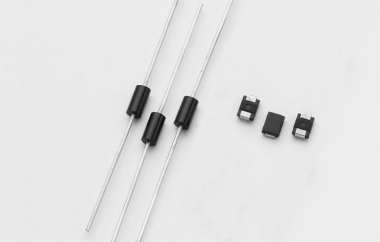
With the continuous advancement of electronic technology, the demand for high-performance semiconductor components in power control and protection devices is steadily increasing. SIDACs, a special type of switching thyristor, play a crucial role in the electronics industry due to their unique electrical characteristics and reliable performance. This article provides an overview of SIDACs, covering their definition, working principle, key features and advantages, as well as their applications.
Catalog
I. What is a SIDAC?
A SIDAC (Silicon Diode for Alternating Current) is a bidirectional triggering device made from five layers of semiconductor material, belonging to the thyristor family. Its structure allows it to conduct under voltage of either polarity, making it particularly suitable for AC circuits. The SIDAC has a relatively fixed triggering voltage; once this voltage is reached, the device quickly switches to its conducting state, creating a low-impedance path.
II. Working Principle
Internally, the SIDAC resembles a PNPN thyristor. When the applied voltage rises gradually to its specified breakdown voltage, avalanche breakdown occurs inside the device, causing a rapid increase in current and switching the SIDAC into conduction mode. During conduction, the voltage across the device drops quickly below the holding voltage, maintaining a low-impedance state. When the current falls below the holding current threshold, the SIDAC automatically switches off, returning to its high-impedance state. This process repeats during each positive and negative half-cycle of the AC signal, enabling bidirectional switching.
III. Features and Advantages
· Bidirectional conduction: Operates normally during both positive and negative half-cycles of AC without requiring external triggering signals.
· High breakdown voltage: Suitable for high-voltage applications, ensuring safe and stable circuit operation.
· Self-resetting capability: Automatically returns to its off-state after current interruption without needing external reset circuitry.
· Fast response: Rapidly switches on once breakdown voltage is reached, ensuring timely activation of protection mechanisms.
· Simple structure and low cost: Facilitates mass production and broad application.
IV. Applications
· Overvoltage protection: Commonly used in surge protection devices to shield equipment from transient high voltages caused by lightning strikes or power grid fluctuations.
· Switch control: Acts as a triggering element in certain AC switches and dimmer circuits to control the conduction of power semiconductors.
· Ignition circuits: Utilized in gas discharge lamps and ion generators to control ignition pulses.
· Voltage clamping and regulation: Employs its stable breakdown voltage characteristic to maintain voltage stability.
· Power electronics protection: Widely applied in inverters, frequency converters, and other power electronic devices to enhance system noise immunity and reliability.
V. Conclusion
SIDACs are vital power semiconductor components within the electronics industry. Their high current handling capability, bidirectional conduction, and self-resetting features make them indispensable in applications such as overvoltage protection, surge suppression, and voltage regulation. As global demand for power electronic equipment grows, the scope of SIDAC applications continues to expand, cementing their status as key elements in modern electronic systems.




